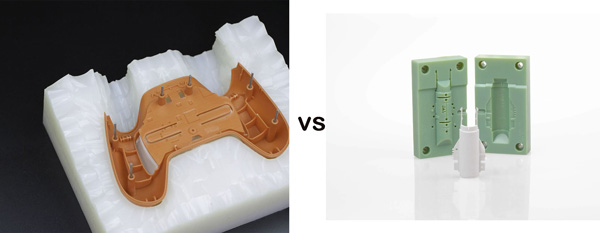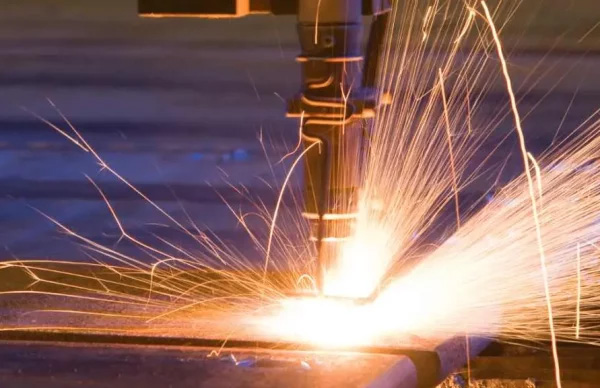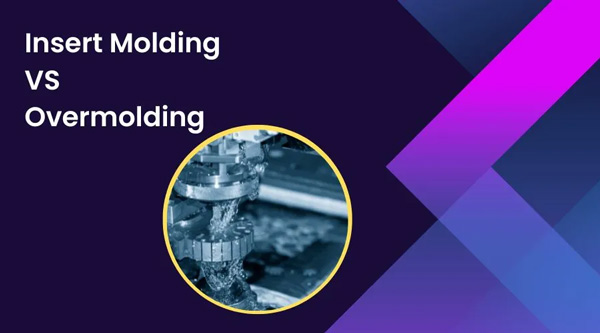Manufacturing precision rests upon CNC milling, a process through which tools guided by computers carve out metal, plastics, or wood into specific shapes. Unlike traditional methods, CNC milling uses a unique CNC program to do its complex cuts, which creates artificial consistency across the automotive, healthcare, and robotics industries.
The CNC program is essentially the roadmap for the machine, converting designs into movements. This science is produced at a tight tolerance from prototype to production, from imagination to part.
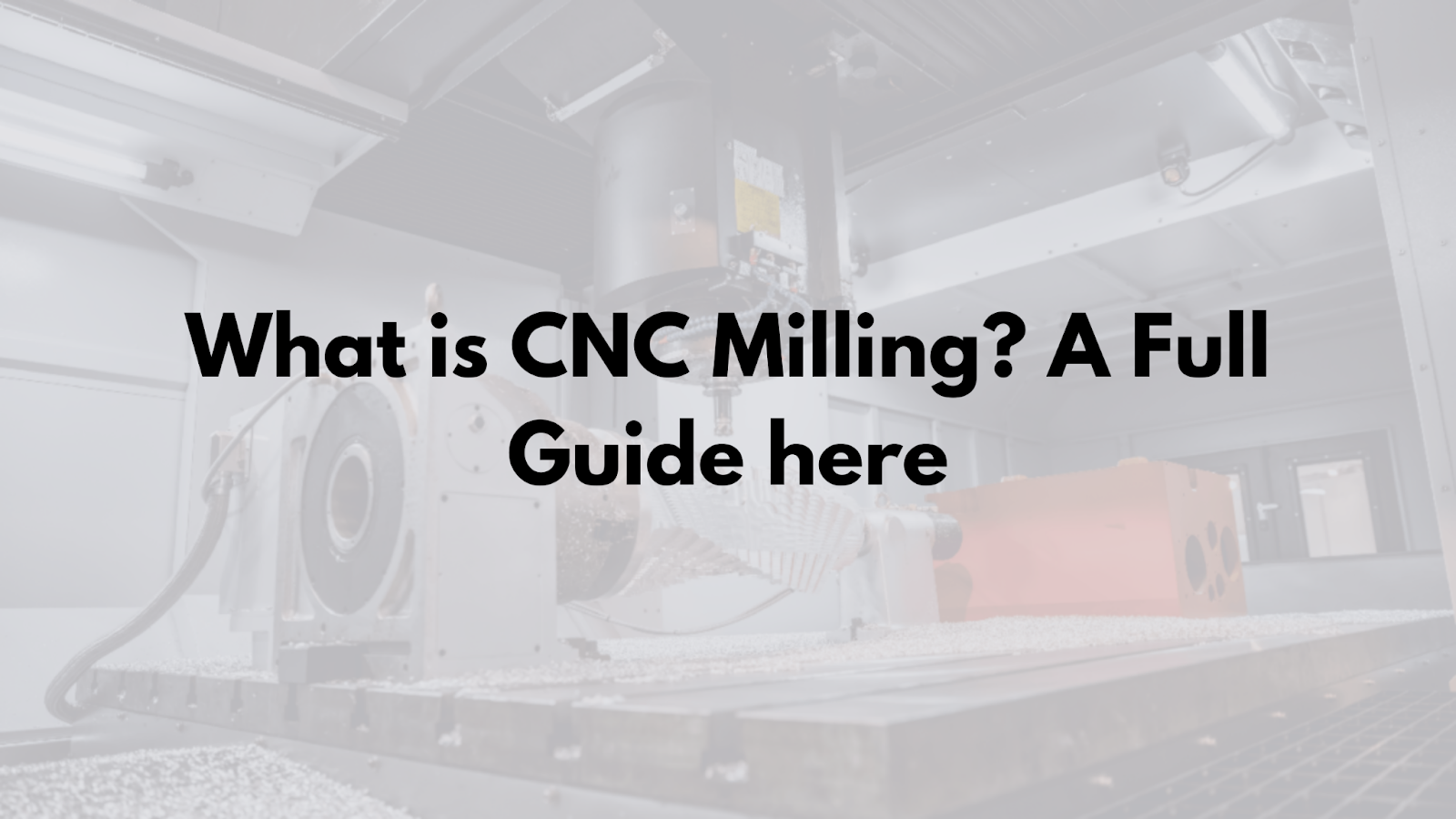
What is CNC milling?
This is the practice of making exact parts out of raw shapes of metals, plastics, or wood, using automated, computer-guided tools. Unlike machining in the old days, which needed good manual skill, this is dependent upon computer numerical control programming, a digital “recipe” that dictates every movement of the cutting tool.
The engineer creates a 3D model, which he then transforms into G-code, the language that controls the machine in spindle speed, toolpaths, and depth of cut. Result? Consistent, high-accuracy parts in everything from car engines to surgical tools.
It’s the go-to method when tight tolerances and repeatability matter, blending creativity with industrial-grade precision.
Different Types of CNC Milling Operations
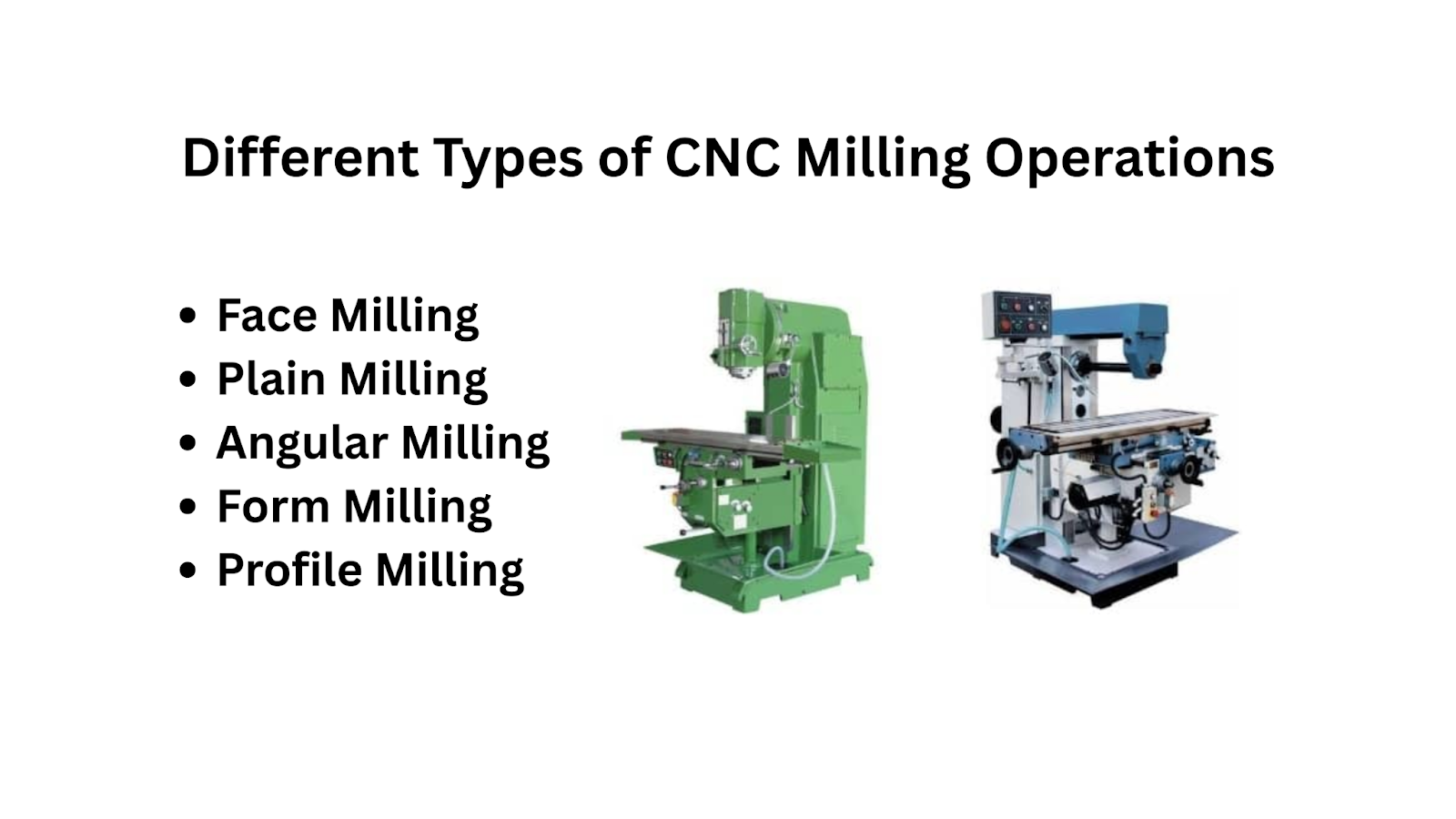
Not all cuts are created equal. The type of milling operation depends on the part’s design and function:
- Face Milling: Uses a wide cutter to shave material off flat surfaces, creating smooth finishes (common for engine components or mounting plates).
- Plain Milling: Cuts straight, deep grooves, and thick slots for bolts in machinery frames.
- Angular Milling: Tilts the cutter to machine precise angles, like bevels in automotive parts or aerospace brackets.
- Form Milling: Shapes intricate contours using custom tools, such as gear teeth or decorative moldings.
- Profile Milling: Follows the outer edges of a part, ideal for prototyping or crafting complex geometries like turbine blades.
Each operation requires a tailored CNC program to optimize toolpaths and avoid collisions. For instance, angular milling might demand slower feed rates to maintain accuracy on steep slopes, while form milling needs specialized tooling.
Tips for Selecting Materials for CNC Milling
Choosing the right material isn’t just about strength; it’s about how it interacts with the milling process. Here’s a cheat sheet:
- Aluminum: Lightweight and easy to machine, perfect for automotive or consumer electronics. But it’s prone to sticking to tools without proper coolant.
- Stainless Steel: Quite tough and resistant towards corrosion; process at slow speeds to avoid overheating and premature wear of the cutting tools.
- Plastics (e.g., ABS; Nylon): Cheaper production methods to create prototypes; however, softer materials may melt or warp in cutting due to heat accumulation.
- Engineered Materials (e.g., PEEK): High-performance but pricey, used in aerospace for heat resistance and durability.
Always ask, What’s the part’s purpose? Will it face heavy loads, moisture, or extreme temperatures? For example, marine components need stainless steel for rust resistance, while medical implants often use titanium.
Work closely with your machinist; they’ll adjust the computer numerical control programming to account for quirks like a material’s hardness or how it chips. Sometimes, a “cheaper” material ends up costing more due to longer machining times. Balance your priorities: cost, durability, and manufacturability.
How does CNC Milling work?
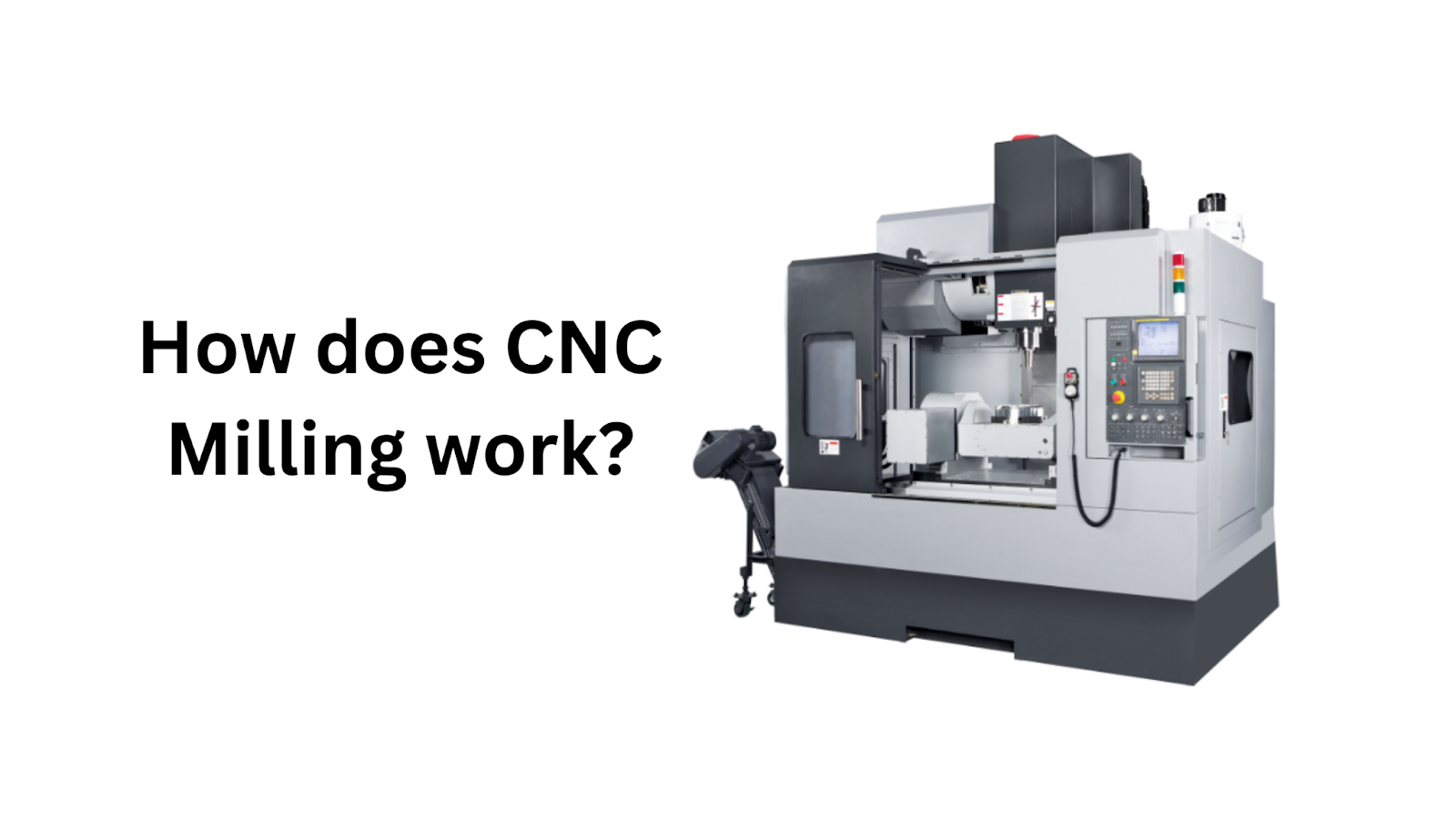
CNC milling transforms digital designs into precision parts through automated, repeatable steps:
- Design Creation: A 3D model (e.g., motorcycle bracket, medical implant) is created using CAD software. This digital blueprint defines the part’s geometry and specifications.
- Programming: The CAD file is converted into G-code via CAM software. This code provides precise instructions for toolpaths, cutting depths, spindle speeds, and material feed rates.
- Material Setup: A block of metal, plastic, or composite is securely clamped to the machine’s work table to prevent movement during cutting.
- Machining Process: The spindle rotates a cutting tool (end mill, drill, etc.) at high speeds.
- The worktable moves along X, Y, and Z axes to position the material under the tool.
- Complex shapes (e.g., curved grooves) require multi-axis adjustments or tool tilting.
- Roughing tools remove bulk material first; finishing tools (like ball-nose cutters) refine details.
5. Real-Time Adjustments: Coolant sprays prevent overheating, while vibration sensors adjust cutting speeds to avoid tool wear or inaccuracies.
6. Quality Verification: Finished parts undergo dimensional checks (e.g., 3D scanners) and functional tests to ensure tolerances as tight as ±0.01 mm.
7. Repetition: Once validated, the G-code program can replicate identical parts indefinitely, making CNC ideal for prototypes, low-volume batches, or large-scale production.
Pros & Cons of the CNC Milling Process
CNC milling is not a convenient solution in all situations, just like any tool. Great for some circumstances, but it falls flat on others. When it comes to prototyping a custom part or mass-producing components, it is important to understand in what areas it is better. However, let us not hype this process beyond what it can be, the reality of what it can do, and what it cannot do.
Pros |
Cons |
| Precision you can trust: CNC mills hit tolerances as tight as a fraction of a human hair. Need a part with 0.001-inch accuracy for a medical device? Done. No shaky hands or human guesswork. | Wallet shock upfront: High-quality CNC machines cost more than a luxury car. Add software, training, and tooling, and small shops might struggle to justify the investment. |
| Repeatability for days: Once the program’s dialed in, the machine pumps out identical parts, whether you need 10 or 10,000. Consistency is king in industries like automotive or aerospace. | Material waste adds up: Unlike 3D printing (which adds material), milling removes it. Complex parts can leave piles of chips, which is costly if you’re using pricey alloys. |
| Material flexibility: Aluminum, titanium, nylon, and even carbon fiber. CNC mills chew through most materials without breaking a sweat. Swap the program, and the same machine crafts a guitar body or aircraft bracket. | Not all materials play nice: Super-hard metals like Inconel wear down tools faster, hiking up costs. Delicate plastics? Heat buildup can warp parts mid-cut. |
| Complex shapes, no sweat: Undercuts, 3D contours, or internal channels? CNC tools pivot and tilt to tackle geometries that manual milling can’t touch. | Maintenance is non-negotiable: A neglected mill is a ticking time bomb. Regular calibration, lubrication, and part replacements keep it humming; skip these, and precision tanks. |
| Less labor, fewer errors: Skilled machinists are still essential, but the machine handles the grunt work. One operator can oversee multiple jobs, slashing the risk of fatigue-driven mistakes. | Design limitations lurk: Super-thin walls or ultra-sharp corners might snap tools or vibrate during cutting. Often, it requires simplicity in design or a change of processes. |
CNC milling’s strengths in precision, repeatability, and material adaptability make it a powerhouse for industries where exacting standards are non-negotiable. However, its upfront costs, material inefficiencies, and technical constraints demand a pragmatic assessment of your project’s scope and long-term goals. For high-stakes applications like aerospace components or medical devices, the investment often pays off, but smaller-scale or experimental ventures may need to weigh alternatives or hybrid strategies.
What is a CNC milling machine?
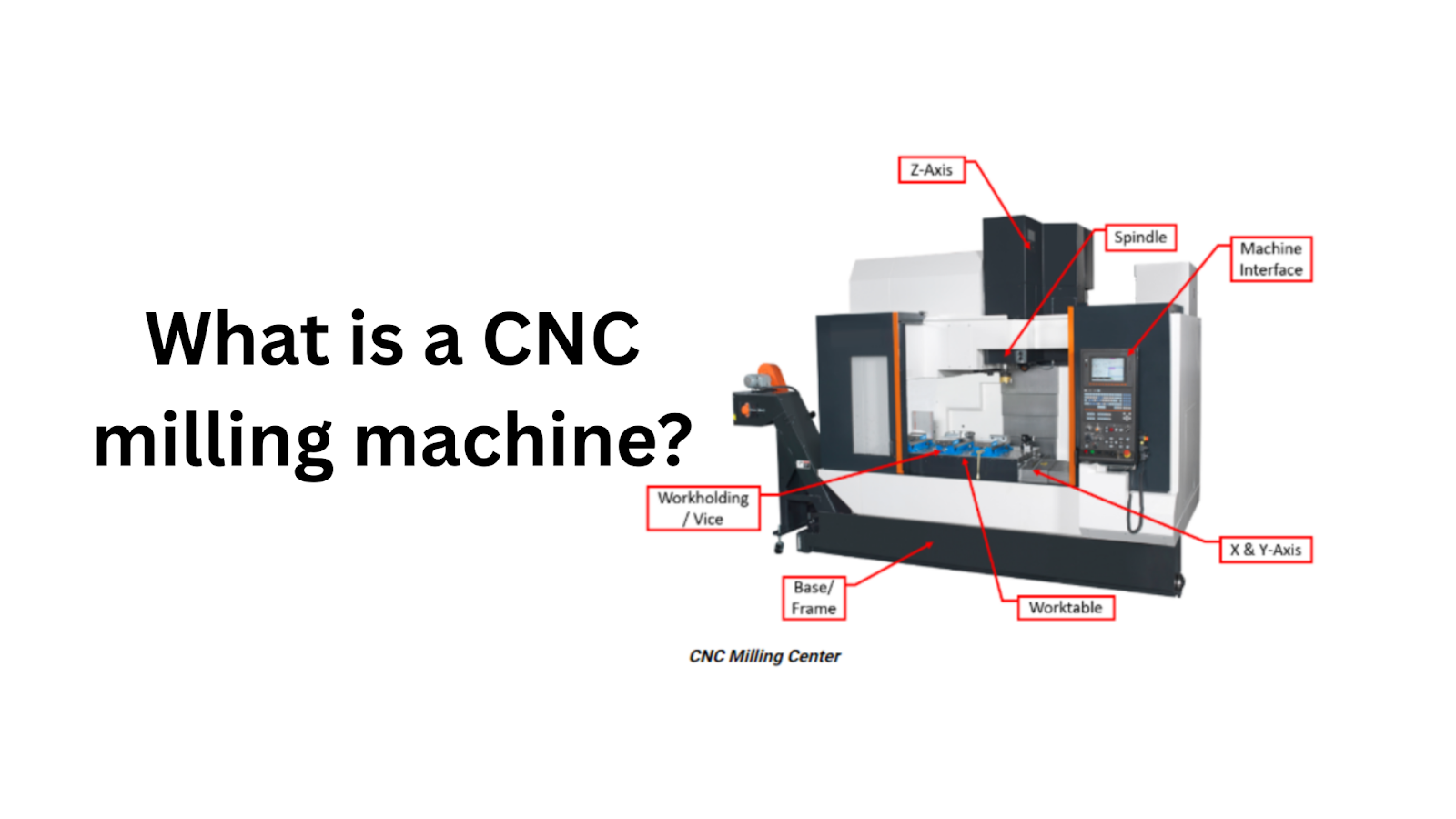
CNC milling machines are cybernetic artisans, crude power, and poignant precision. They carve shapes in metals, plastics, or composites using computer-guided tooling. The operators feed the machine with a digital design, often sourced from CAD software. This blueprint is converted into actual coded instructions known as G-code.
This command will allow for the movement; the speed of the spindle will be determined, followed by where the cutting tool travels to, ending in the material depth it digs. CNC milling automates the entire activity and thus has a different quality compared to manual milling, which always relies on human capacity with the aid of a steady hand.
The whole setup is attached to an effective multi-axis arm rotating on a rotational basis and provides availability of horizontal, vertical, and depth movements for manufacturing detailed surface shapes and grooves or creating parts with very complex three-dimensional contours. It is not just cutting. It is a choreographed dance of geometry and physics.
Types of Milling Machines
Milling machines come in flavors tailored to specific jobs:
- Vertical Mills: The spindle moves up and down, which is perfect for detailed work like engraving or shallow cuts. Auto shops use these for engine parts; small workshops mill custom brackets or signs.
- Horizontal Mills: The spindle runs sideways, tackling heavy-duty tasks like machining deep slots or multiple sides of a part without resetting. Ideal for industrial gears or molds.
- 5-Axis Mills: These machines twist and tilt the cutting tool or workpiece along five axes, handling curves and undercuts in one go. Aerospace labs mill turbine blades; medical labs craft bone implants.
- Benchtop Mills: Compact and budget-friendly, these handle lighter materials like aluminum or plastic. Makerspaces and schools use them for prototypes or educational projects.
Each type has trade-offs. Vertical mills are simpler but limited in complexity. 5-axis machines are wildly versatile but cost as much as a luxury sedan. Benchtop models are accessible but struggle with hard metals like titanium.
Applications of CNC Milling Machines
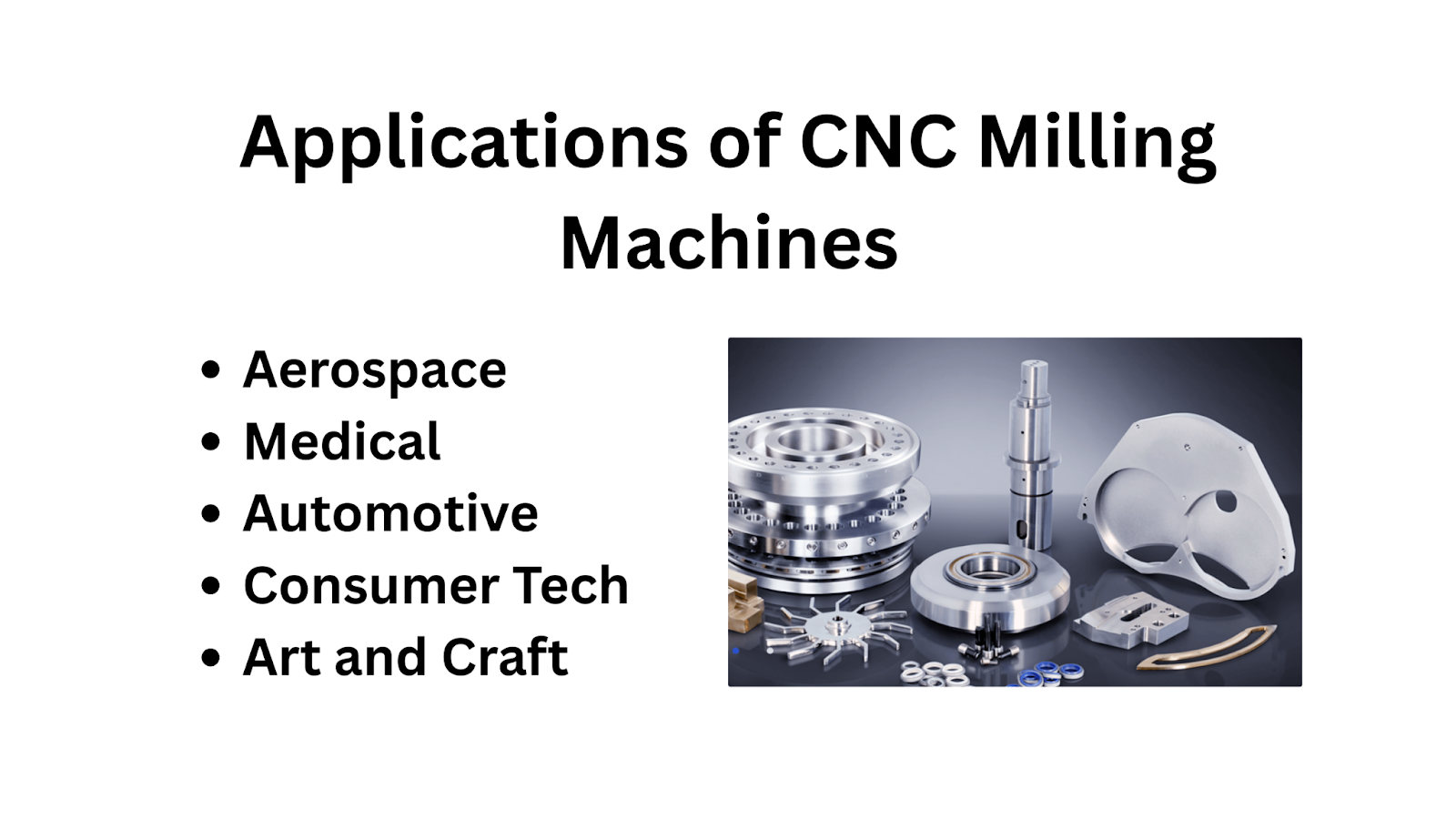
CNC milling’s footprint spans industries you’d never expect:
- Aerospace: Turbine blades, satellite mounts, and engine components demand materials like titanium or Inconel. CNC mills carve these to survive extreme heat and stress.
- Medical: Hip replacements, spinal implants, and surgical tools require biocompatible materials and flawless finishes. A milled titanium knee joint, for instance, must fit perfectly to avoid rejection.
- Automotive: From piston heads to custom alloy wheels, mills produce parts that endure heat, friction, and vibration. Even EV battery casings rely on milling for precision.
- Consumer Tech: The aluminum unibody of your laptop? Likely milled for seamless edges. High-end watches, camera bodies, and drone frames all depend on this process.
- Art and Craft: Sculptors use mills to turn marble or resin into intricate statues. Jewelers mill engagement rings with geometric patterns that manual tools can’t replicate.
Small businesses lean on CNC milling, too. Craft breweries create branded tap handles. Robotics teams mill lightweight frames for competition bots. Even restoration shops use them to recreate vintage car parts that haven’t been made in decades.
While milling dominates precision manufacturing, it’s not universal. Delicate parts (like microelectronics) might need laser cutting, and ultra-thin designs often suit 3D printing. But when durability, material diversity, or tight tolerances matter, milling remains unmatched.
Who is the Best CNC Milling Partner for You?
For precision manufacturing, the Koonze Model has established a reputation for being a reliable partner, assisting businesses along the road from prototyping to full-scale production. Established in 2016 and located in Shenzhen, this ISO-certified company (ISO9001, IATF16949, ISO13485) merges technical expertise and a customer-first mindset to produce high-quality CNC-machined parts, ranging from prototypes to low-volume batches and mass production.
Here’s why we’re a top contender for your next project:
Why the Koonze Model?

Koonze Model delivers precision manufacturing with speed, quality, and partnership at its core.
- Advanced Infrastructure: 8,000 m² facility | 100+ machines | ±0.01mm precision | In-house CNC, 3D printing, molding.
- Rapid Turnaround: 1-day prototyping | Same-day delivery | Low-volume batches | Scalable solutions.
- Guaranteed Quality: 3D measurement tools | Rigorous inspections | Automotive/medical compliance | Zero-defect focus.
- Collaborative Expertise: DFM optimization | Engineering partnerships | ISO-certified processes | Client-driven results.
Core Service Selling Points
- Rapid Prototyping: Validate designs quickly using CNC machining, 3D printing, or vacuum casting.
- Low-Volume Production: Bridge the gap between prototyping and mass production with batches as small as 10 units.
- On-Demand Manufacturing: Scale effortlessly with flexible order volumes and materials (metals, plastics, composites).
- Transparent Workflow: Upload your CAD file, receive a quote within 12 hours, and track progress in real time.
How to Collaborate
Working with the Koonze model is straightforward:
- Upload Your Design: Share specs via their portal for quotes and DFM feedback.
- Refine & Approve: Their engineers suggest optimizations to reduce costs or improve manufacturability.
- Production & Delivery: Parts arrive at your doorstep in days, not weeks, with full inspection reports.
Koonze Model thrives on turning “what if” into “what’s next.” Our blend of speed, precision, and hands-on collaboration makes them a go-to for industries ranging from aerospace to consumer electronics. Whether you’re fine-tuning a prototype or ramping up production, we’re built to adapt- no hype, just results. Ready to start? Visit the Koonze Model or upload your design today.
FAQs
How accurate is CNC milling?
Modern CNC mills achieve tolerances as tight as ±0.001 inches (0.025 mm) or better, making them suitable for precision components like surgical instruments or aerospace fittings.
What are the limitations of CNC milling?
Limitations include material waste (unlike additive methods), size constraints (limited by the machine’s bed), and difficulty with undercuts or internal geometries. Complex designs may require multiple setups or specialized tools.
Is CNC milling easy?
Not exactly. Running the machine is straightforward once programmed, but mastering computer numerical control programming and tool setups takes practice. Beginners often team with skilled machinists to avoid costly errors.
Can a CNC mill cut wood?
Absolutely. While designed for metals, mills cut wood easily with sharper, faster-spinning tools. It’s popular for intricate carvings, guitar bodies, or prototypes; just watch for splintering on softer woods.
Conclusion
CNC milling bridges raw materials and precision engineering, transforming digital designs into tangible parts with unmatched accuracy. From aerospace turbines to custom guitar bodies, its versatility powers industries demanding reliability and complexity. While the process isn’t without challenges, costs, material limits, and technical skill, it remains unmatched for tight tolerances and repeatability.
Choosing the right partner, like the Koonze Model, ensures quality, speed, and collaboration tailored to your needs. Whether prototyping or scaling production, CNC milling turns ideas into reality, proving that innovation isn’t just about tools; it’s about who guides them.


